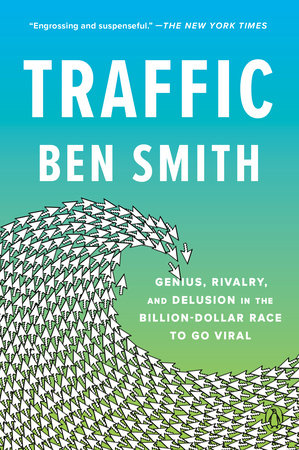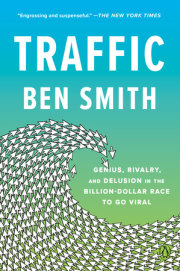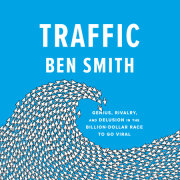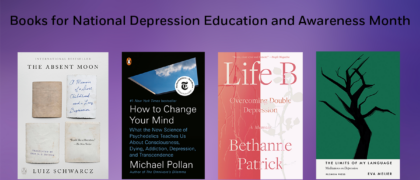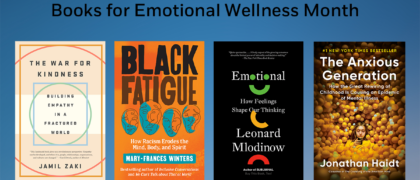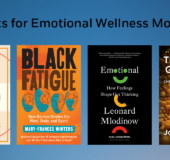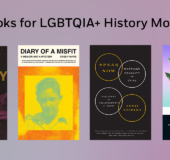1
The Bet
Jonah Peretti and his best friend at grad school, Cameron Marlow, bet on everything. The sum was always two dollars. They'd bet on the winner of a basketball game, or whether Jonah could jump up on top of a chest-high wall in Cambridge, Massachusetts. Their patter was objectively kind of annoying, these two skinny graduate students with their floppy brown hair, marching around the campus of the Massachusetts Institute of Technology, where they'd met in the fall of 1999, trying to one-up each other. Cameron, fresh out of college at twenty-two, was one of the youngest in the new class at the MIT Media Lab, and he wore that chip on his shoulder. Jonah was twenty-five. His left-wing politics and laughing California calm failed to conceal his intense competitiveness.
So it made sense that when Jonah went viral, truly viral, for the first time, on January 5, 2001, his friend and rival wouldn't let him bask in his glory. Cameron said it was a fluke. The internet was too random, culture too unpredictable, to pull something like that off again. "Two-dollar bet," Jonah suggested automatically. He'd spend the next twenty years trying to win that bet.
January 5, 2001, was a Friday, a freezing day in Cambridge. It was the last year of the American Century, when public intellectuals were spending their time worrying about the ennui at the end of history. The question was what young Americans, having conquered the Soviet Union and dominated the world, were supposed to do next. Jonah, whose lean height and bouncy gait gave you the sense that he was about to take flight, had turned twenty-seven on New Year's Day. He and Cameron were charting the digital future from their offices looking into the Cube, the glass box at the center of the Media Lab. Cameron was working on turning old issues of
Time magazine into digital visualizations. In the next office, Jonah was supposed to be completing the research project on education that had gotten him admitted to MIT from his position running a high school computer lab in New Orleans. But, in fact, Jonah was on nike.com, looking at sneakers.
The company was letting shoppers customize shoes. Jonah chose a pair of size 10 Zoom XC USA running shoes and typed "fuck" into the white box where you could put a word of your choice. The site blocked it. To test how sophisticated the system was, he tried a different word: "sweatshop." It went through, so he charged the fifty dollars to his credit card and waited for his sneakers.
Instead, he got an email from Nike. His submission violated their policies-in particular, one against "inappropriate slang."
Jonah wrote back, noting that "sweatshop" "is in fact part of standard English," defined by Webster's dictionary as a "factory in which workers are employed for long hours at low wages and under unhealthy conditions."
He received another polite rejection. He didn't mind being a little annoying, obviously, and kept writing back. And after seven emails from Nike, Jonah made one final request: "Could you please send me a color snapshot of the ten-year-old Vietnamese girl who makes my shoes?"
That was the end of his correspondence with polite Nike customer service representatives. Jonah was pleased with his prank and, in particular, the line about the Vietnamese girl, so he put all the emails in order and submitted the exchange to
Harper's Magazine, hoping he could reach what was then the pinnacle of success and attention for something like that: the
Harper's Readings section, a monthly-print!-compilation of odd and timely documents. The magazine declined, so on January 15, he forwarded the email to ten friends. Some forwarded it from there-it was the kind of slacker anti-corporate joke that hit at the complacent end of the Clinton era. On January 17, Jonah's old roommate from New Orleans, Tim Shey, put the text of the exchange on his personal website, something people were starting to call a blog. Then bigger websites, like
MetaFilter and
Slashdot, picked it up. Over the next few weeks, the email traveled from inbox to inbox, a catchy little corporate protest. Pretty soon Jonah was getting emails from newspaper reporters and, then, a booker for the biggest morning television program in America, the Today show.
On February 28, 2001, just six weeks after he forwarded that first email, Jonah was sitting nervously on a gray couch in Rockefeller Center in a gray wool Calvin Klein jacket that was too big at the shoulders and not quite long enough for his long arms. He had no real idea where to look or what to say, but told Katie Couric that he'd read some bad things in the newspapers about Nike's labor practices. That was really all he had-he didn't know much about sweatshops and was winging it. He thought Couric could sense his weakness. So she did his work for him, reading his line about Vietnamese child labor to a Nike spokesman who had joined them over video link from Phoenix. The spokesman, too, was trying to make the best of it, defending his company's labor practices-while thanking Jonah for calling attention to Nike's foray onto the internet.
"Traffic and contact between Nike and consumers is up 75 percent in some categories and 100 percent in others," the spokesman, a Nike Swoosh on his tight black T-shirt, defiantly told Couric. "There's certainly more awareness of the fact that we personalize shoes."
Couric thanked her guests and moved on to the next segment, an interview with
Spin City star Heather Locklear. Jonah walked off the set feeling like an imposter. He wasn't studying economics or international relations or labor at MIT. He didn't know anything about sweatshops. What he was studying was the same thing the Nike spokesman had fixated on: he knew about traffic. As it turned out, Jonah would devote his career to collecting it and quantifying it, immersing himself in its patterns and in its power, which could equally hold Nike to account over its labor practices, or just sell sneakers.
Traffic was, literally, just the record of the request your desktop computer made of the computer hosting the article you were reading. When one of Katie Couric's producers visited Tim Shey's blog, that visit counted as one view, the elemental unit of traffic. But traffic, Jonah was among the first to discover, wasn't merely mechanical. Traffic was human emotion, human psychology, desire and curiosity and humor. It was easiest to see this sort of pattern when you felt like an outsider, an alien. Jonah sometimes looked at behavior the way the linguist Noam Chomsky, an MIT professor, looked at language. Chomsky wrote about how a Martian anthropologist would look at humans, and how simple and uniform our speech would look through alien eyes.
Jonah had been making a study of humans since kindergarten, when his mother, Della, had enrolled him in the Oakland public school system. He was a happy, gregarious little kid, the kind who babbled away to puzzled friends about the polar ice caps. The first day of kindergarten, his dad moved out. And as that year went on, Della noticed that something seemed a little wrong: this kid, so interested in ideas, had no interest at all in symbols-in particular, in letters. Soon, Jonah was diagnosed with dyslexia and enrolled in special ed, and his mother, getting her graduate degree in education, was losing sleep worrying about the dire fate of smart, angry kids who never learned to read.
Jonah felt trapped in school, isolated among strange children who could look at the blackboard and understand it. He looked forward to Saturdays, when he took a pottery class. The clay absorbed his anger, his desire for freedom, and his intelligence: he realized he could make long spindly legs, and that if he built a giant monster around the finished legs, the clay would contract and make the structure surprisingly secure, standing half as tall as him. Finally, in fourth grade, he began to read, painstakingly, recognizing words rather than sounding them out, and he gave up on the monsters.
In seventh grade, he left his neighborhood school for Claremont Middle School, where he was even more obviously an outsider, the gangly white boy in a class that was mostly Black, mixed in with the children of Cambodian refugees. Della got a job teaching there, and taught him one class she knew he'd never survive on his own-French. She passed him by ignoring the errors that fell within the scope of the school's accommodations for his dyslexia.
Della used money she'd inherited from her father to pull Jonah out of public school for high school, sending him to the College Preparatory School, a small private high school whose progressive philosophy was belied by its intense focus on getting students into Harvard and Stanford. His classmates recalled a sweet-natured student whose competitive edge came out mostly through sports. He was the star of the volleyball team and trained obsessively until he could dunk a basketball. Della edited every paper he turned in, ironing out the typos.
Nobody thought he was a particularly brilliant student until the junior year philosophy class, a sort of Nietzsche for Dummies, where it became clear that the kind of slow, deep reading that philosophy requires matched both Jonah's disabilities and what his friend Romesh Ratnesar recognized as his "extreme gifts." Romesh went on, like many of their classmates, to the bosom of the establishment, Stanford and
Time magazine. Jonah applied to only one college, the University of California, Santa Cruz, the unconventional, cross-disciplinary school that the Grateful Dead's surviving members would later choose as the right "seat of neo-Bohemian culture" to house their archive.
Jonah had been steeped in Berkeley's leftist politics, and had spent high school reading anti-corporate tracts and theories of anarchism, along with translations of the Tao Te Ching and other works of Eastern philosophy that were ubiquitous at local bookstores. He began to feel the limits of those politics at Santa Cruz, where he majored in environmental studies but sometimes bridled at what he felt was the discipline's antihuman thrust and its tendency to choose nostalgia over technology, and gravitated toward the more abstract spaces of Santa Cruz's famous History of Consciousness program. Jonah loved theory; the more unskimmably dense the subject, the more his painfully slow reading could be an advantage. He read Marx and Kant and Freud, and was one of a small number of male teaching assistants in an Introduction to Women's Studies class, where college students wrestled with the lines between sex and rape, and grappled in sometimes comical ways with America's various histories of oppression. After the class's Black teaching assistants walked out in protest once, the professor convened a healing session in which the teaching assistants passed around a crystal. During the heartfelt discussion of race that ensued, one teaching assistant took the crystal and turned the discussion to the millennia of oppression of her own minority: Wiccans. Jonah stifled his laughter, and emerged with a resistance to a certain kind of performative ideology.
Jonah's favorite professor at Santa Cruz was Donna Haraway, a creator of what was then called cyberfeminism and the author of the famous "Cyborg Manifesto," an argument that the new technologies and modes of communication had overtaken old arguments about men and women, nature and nurture. He was a star undergrad, the kind who published dense articles in scholarly journals about the way pop culture shaped new kinds of identities in "late capitalism." Jonah struck Haraway as a deep reader, curious and open to criticism. She wasn't surprised that he became a "generative and also controversial figure in technoculture and culture at large."
Jonah struggled to merge his playful interest in media with loftier ideas about late-stage capitalism. Soon after he graduated in 1996, he published a dense article in the philosophical journal
Negations about the links between capitalism, media, and the formation of identity in an already disorienting media age. When he came home from college, Jonah put some of what he'd absorbed about capitalism and media into practice. There was a new set of billboards around town that was driving him nuts: a drink called Tejava was marketing itself with images of smiling Javanese women and the loaded (at least to a young academic) slogan "The purest expression of tea." Late one summer night, he climbed up the outside of a building onto the roof to spray-paint, in six-foot-tall letters, a new word over the slogan, so it read "The purest expression of exploitation."
There was a straight line from those graffitied billboards to the Nike email, both in their hazily leftist politics and in Jonah's preference for a kind of individual, unfettered action. He would note later that the internet was a far better outlet than graffiti for spreading a message, with "more impact and leverage with less legal risk!"
Jonah took a detour after college, teaching computer science at a private school in New Orleans while he applied to the MIT Media Lab, which sat at the intersection of all the ideas and technologies that captivated him. He was rejected the first time, and taught another year before he was admitted. Arriving in Cambridge, he loved MIT's nerd paradise as much as he'd hated elementary school. He was "finally out on the playground with the other kids," he'd later write.
To be at the heart of a big viral moment like the Nike email, and follow the vertiginous path from your bedroom in Cambridge to Katie Couric's couch, and back, to have all that traffic-that is, attention-rain down on you, is to have your life redirected. Some people react to experiences like this by embracing the cause they stumbled upon. Others spend their lives trying to replicate the fleeting moment of celebrity. But Jonah found the camera's gaze personally uncomfortable. He also cared too much about the medium to fully embrace the message, and turned down an opportunity to endorse a union-made line of golf T-shirts because, he thought, he'd never wear that stuff. So Jonah went back to Cambridge to measure the same substance the hapless Nike spokesman had touted: traffic.
Jonah made a pair of charts, which both followed the now familiar curve of an internet phenomenon: the exponential rise in traffic, the spike, the gradual decay. One chart showed the number of emails he'd gotten about the prank, which rose to a peak of more than 300 a day on February 23 and 24, and then gradually declined, ending with a total of 3,655. Even the
Today show interview could produce only a second, smaller, spike. The other chart was of the traffic to Shey's website, which exploded to more than 2,500 visitors one day in late January and ultimately reached about 70,000 people-more views than on an established website like
The Village Voice. You could just watch the tides of human attention move, and Cameron, looking over Jonah's shoulder, thought you might be able to map this engagement in real time. Cameron switched the focus of his research to something he called Blogdex, a new kind of measurement tool that could turn internet conversations into math-tracking, measuring, and mapping them.
Copyright © 2023 by Ben Smith. All rights reserved. No part of this excerpt may be reproduced or reprinted without permission in writing from the publisher.

